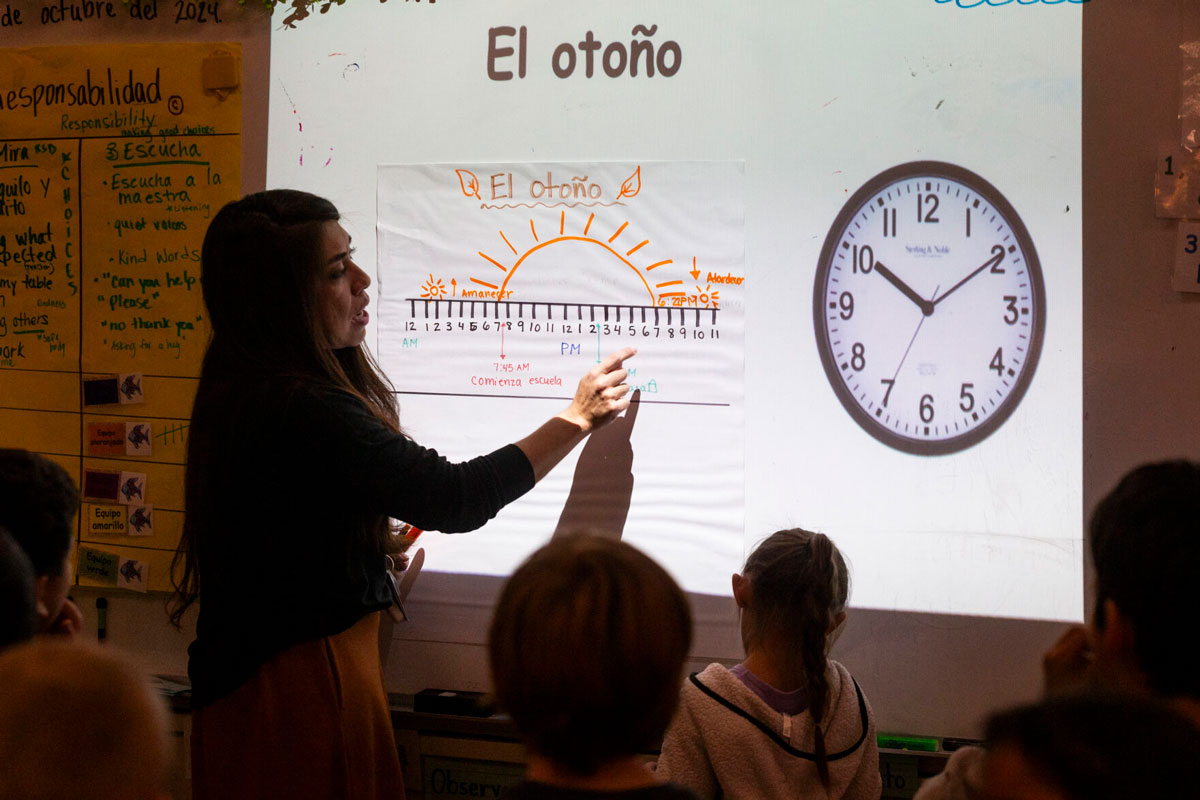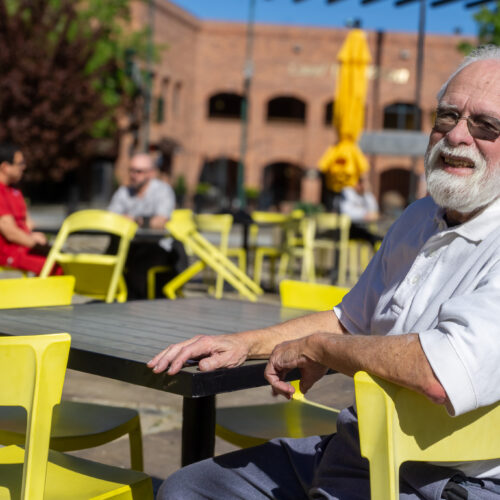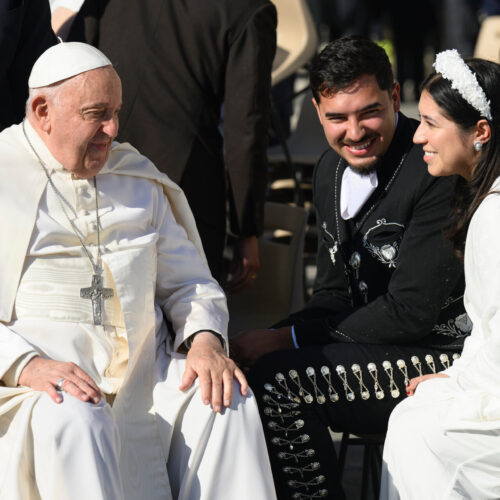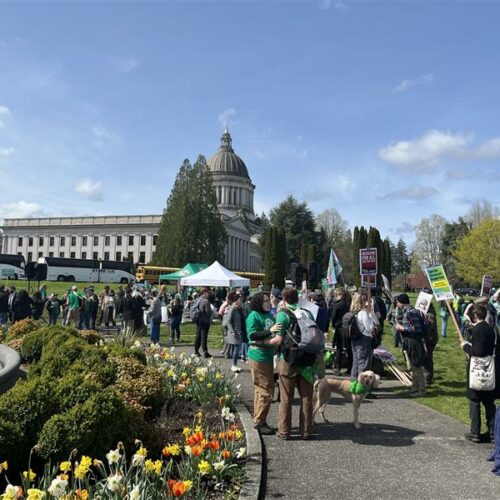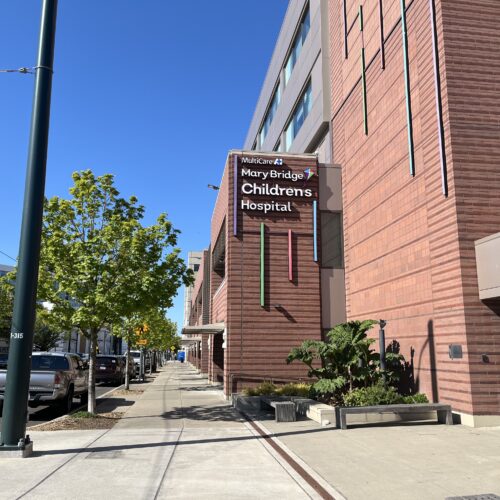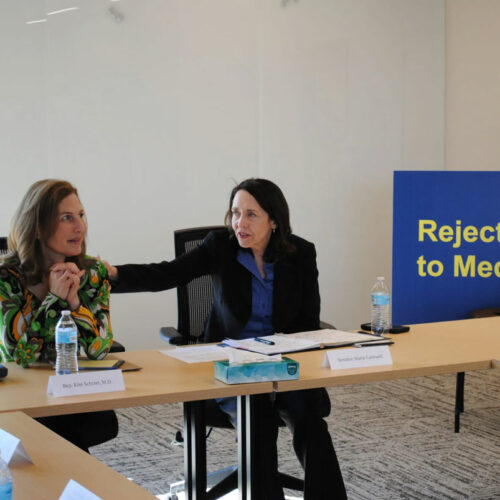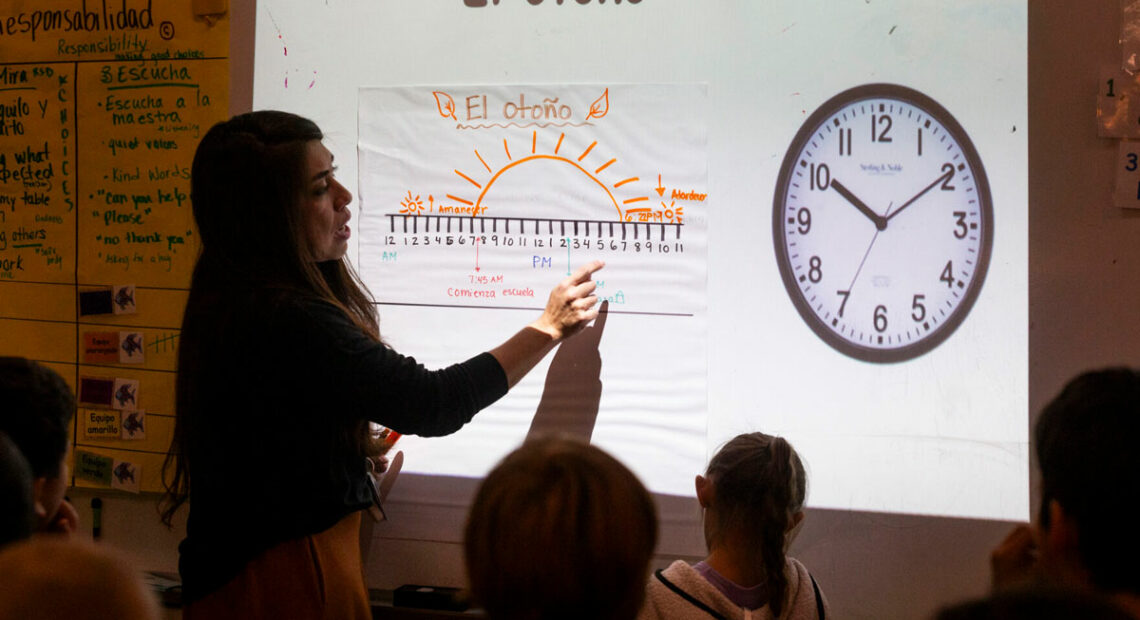
Multilingual programs in Washington schools promote bilingualism and biculturalism
Listen
(Runtime 3:52)
Read
By Reneé Diaz, NWPB & Wenatchee World and Jenni Rodas, Wenatchee World
English proficiency has risen among Latinos in the United States while usage of Spanish has declined, according to the Pew Research Center. In Wenatchee, two schools are taking an approach to increase the number of Spanish speakers by introducing a second language early in a child’s education. They’re aiming to cultivate biliteracy by the time they graduate.
“No child should lose a language to gain a language,” said Mayra Navarro Gomez, the Spanish teacher at St. Joseph Catholic School.
Spanish use at home is gradually declining. In 2019, 70% of Latinos reported speaking Spanish at home, down from a peak of 78% in 2000.
“I think a lot of our Latino families don’t understand the value of them keeping their language and their children being enriched with that opportunity versus being deprived of it,” Navarro Gomez said.
One school in Wenatchee, St. Joseph Catholic School, is a private school that teaches students from preschool to the sixth grade. They teach core subjects while incorporating the Catholic faith into their curriculum.
A majority of the student population is white. Many of the students do not speak English at home. Hispanic/Latino students make up 38.5% of the students. Students of two or more races make up 20.5%, and Asian students make up 1.7% of the school’s population.
The school offers a dual language program for all of its students that is not recognized by the state. They refer to their program as a “multilingual program,” where students learn how to speak, read and write in both English and Spanish.
The school follows a 90/10 dual language model. Students learn in Spanish 90% of the time and English the other 10%. In Spanish class, the students follow this model — in their other classes, the model is flipped.
In Navarro Gomez’s class, students start Spanish class by saying “hola” to a stuffed animal and express how they feel as they go into class.
According to the school, 54% of their staff is fully bilingual and biliterate, which helps bridge the division between English and Spanish in the classroom.
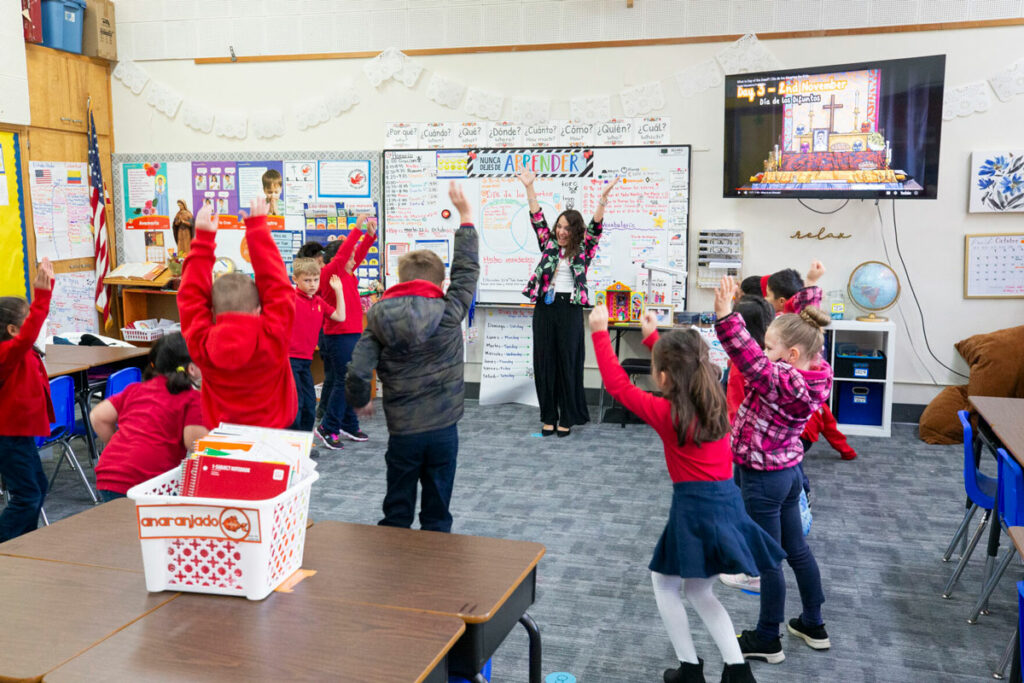
“Research shows that you should at least spend 80% of your time speaking the target language and 10% or 20% of their native language to build bridges,” Navarro Gomez said. “(In class) I used some English intentionally because I knew the kids had not learned that vocabulary before.”
A key aspect of their multilingual program is promoting biculturalism. The school invites speakers from various countries, such as Guatemala, Spain and Mexico, to share insights about their cultures. Students are able to practice their Spanish in conversations with guests.
“I wanted the kids to feel like they’re a part of a bigger society,” said Navarro Gomez.
Students also learn about popular Latin American holidays, like Día de los Muertos, also known as Day of the Dead. It’s a celebration that honors the memory of loved ones who have died.
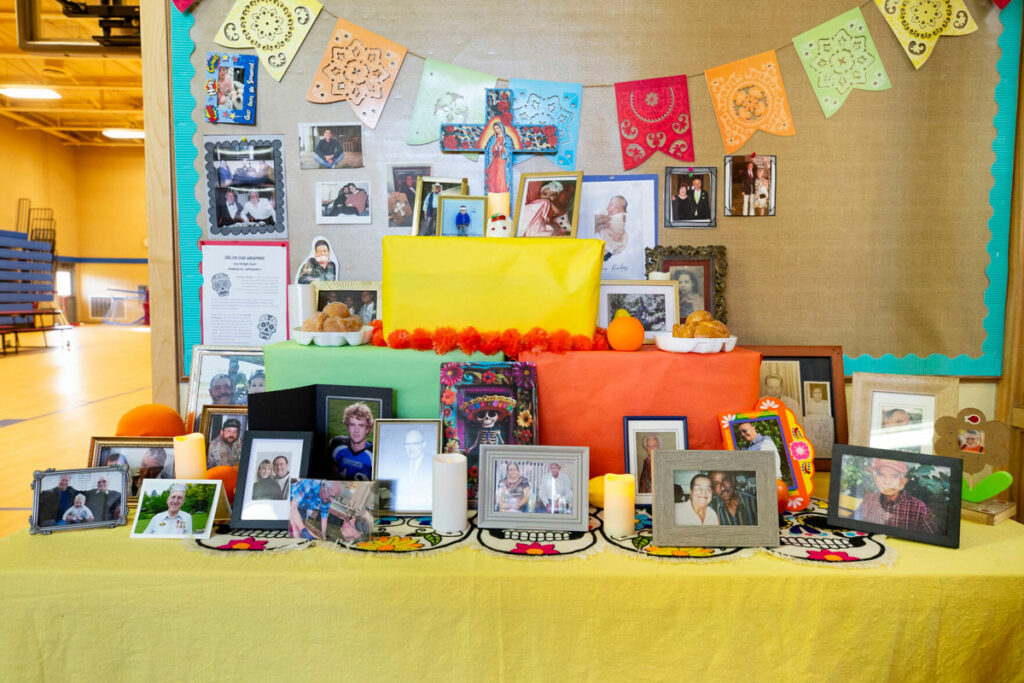
Students at St. Joseph who may not celebrate this holiday at home have the opportunity to celebrate at the school. Many students brought photos of their loved ones who had died and added them to the school altar.
Students also take classes centered around religion. St. Joseph has a Mass in Spanish and English. They prepare students to know their prayers in both languages.
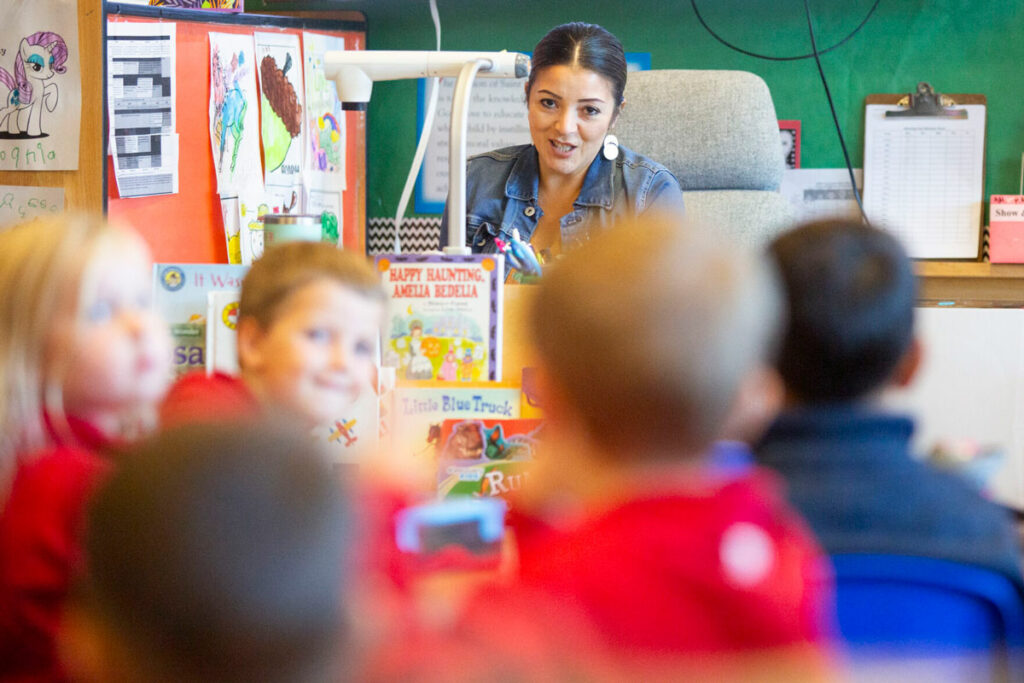
“They can go to Mass anywhere around the world. They can say their prayers in Spanish and go to Spain, Mexico and other places,” Navarro Gomez said.
Dual language programs, according to Washington’s Office of Superintendent of Public Instruction, are the most effective educational model for both multilingual learners and native English speakers. Students learn two languages at once.
Currently, Washington state has about 148 dual language schools across 40 school districts. In March, Gov. Jay Inslee signed House Bill 1228. The law provides grants to school districts and state-tribal schools to expand dual language programs statewide.
The Wenatchee School District is becoming more diverse. According to an OSPI report card for the 2023-2024 school year, 54.4% of the district’s population is Hispanic or Latino.
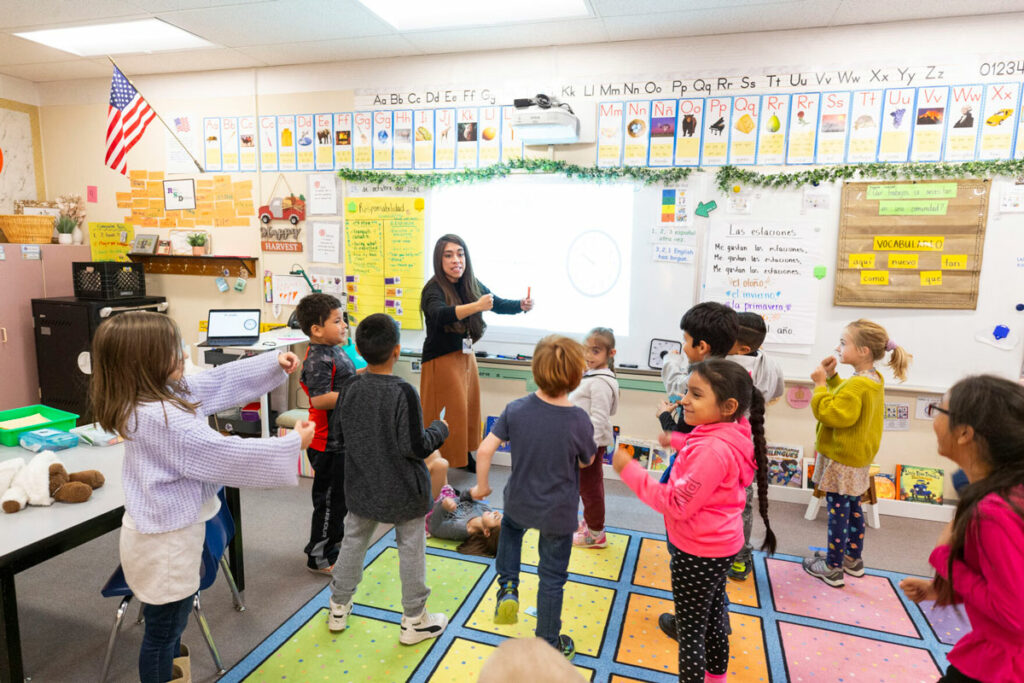
Lewis and Clark Elementary School is a dual language school in the Wenatchee School District. They use the 50/50 dual language model, where students spend half the day learning English and half the day learning Spanish.
Lewis and Clark has over 400 students enrolled in the program, and it has become a model for other schools seeking to implement a dual language program.
The elementary school offers a two-way dual language program that brings together an equal mix of native English speakers and native speakers of the partner language, creating a diverse environment where multilingual learners can learn from one another.
According to OSPI, having a strong bilingual staff is important to ensure the program is successful. Currently, the majority of staff at Lewis and Clark is bilingual.
The school uses total physical response, or TPR, which is a language teaching method that combines verbal commands with physical movement to help students learn new words and phrases.
In this approach, teachers like Guadalupe Zavala first give commands like “levantate,” which means “stand up” in English. Students respond by performing the action.
TPR mimics the way children naturally learn their first language, creating a strong link between language and movement, which aids long-term retention. This method is particularly useful for beginners and young learners.
The school also uses the GLAD strategy, or guided language acquisition design, as an instructional approach that promotes language development teaching models. This includes keeping students engaged with movement, songs and visuals.
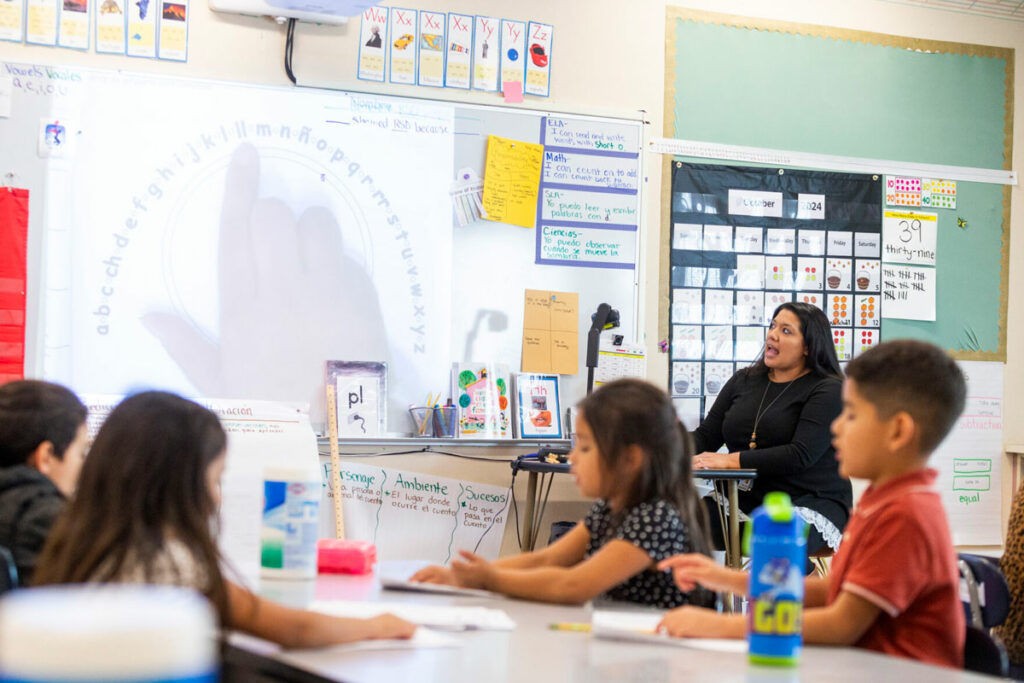
“When you build up your first language, those skills are going to transfer to the English they learn later on. If I’m learning how to read in Spanish, I’ve learned how to read. I’m not going to lose that skill now. I can transfer those skills to reading and writing in another language,” said Mario Avila, the principal at Lewis and Clark.
The elementary school also focuses on enhancing cultural understanding as a key aspect of their dual language program. Students learn and share their own cultural identity while learning more about other cultures from their peers. The school incorporates multicultural literature and features a diverse range of stories in its curriculum.
“The students can ‘see’ themselves in the stories. Our school incorporates various cultural holidays and traditions. For example, our school recently celebrated Hispanic Heritage Month with different grade levels learning about important historical Hispanic figures,” Zavala said.
Parents can also choose to enroll their students in Lewis and Clark for dual language instruction, according to the district website.
Even if you didn’t grow up speaking Spanish at home, in this program you can learn a new language,” said Alfonso Lopez, director of Hispanic and Latino relations at the Wenatchee School District.
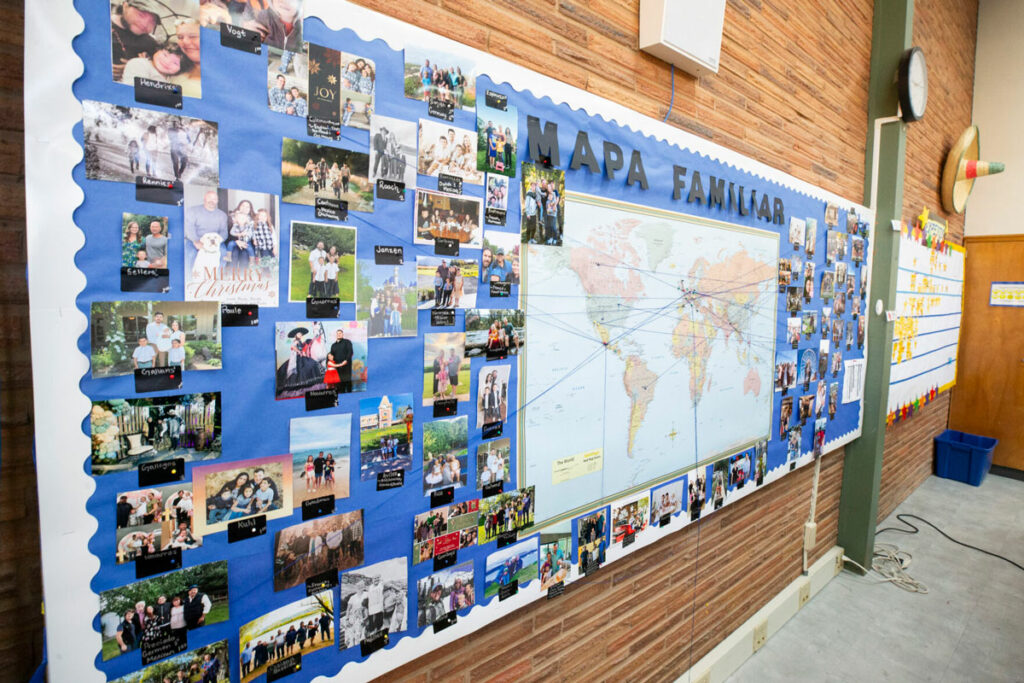
A common goal of both schools is having students be completely bilingual and bicultural. They assess reading, writing and speaking proficiency through the seal of biliteracy and Smarter Balanced Assessment.
The seal of biliteracy is an award awarded by a school, district or state recognizing a student who gained proficiency in two or more languages. It can be used as a certification of a person’s educational background in more than one language.
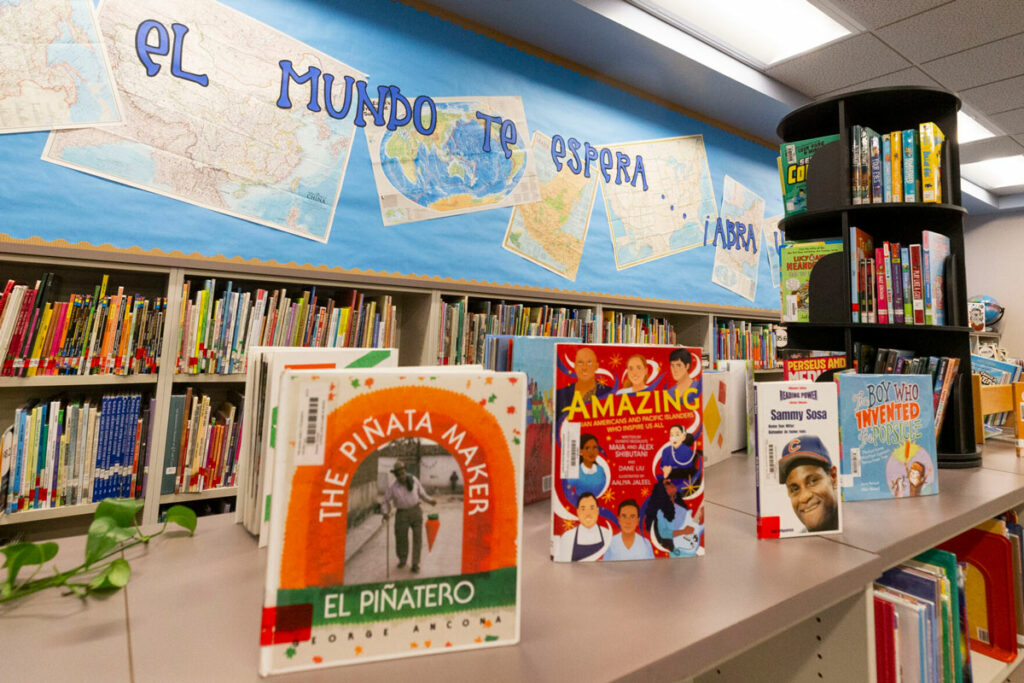
“Our ultimate goal is that these students leave here with that passion for learning another language, that passion for building connections with other cultures,” Navarro Gomez said. “That is really going to translate in their graduation as they pass the seal of biliteracy.”
Reneé Diaz may be contacted at renee.diaz@wenatcheeworld.com. Collaborative reporting by The Wenatchee World, NWPB and WSU’s Murrow College of Communication Newsroom Fellowship.

